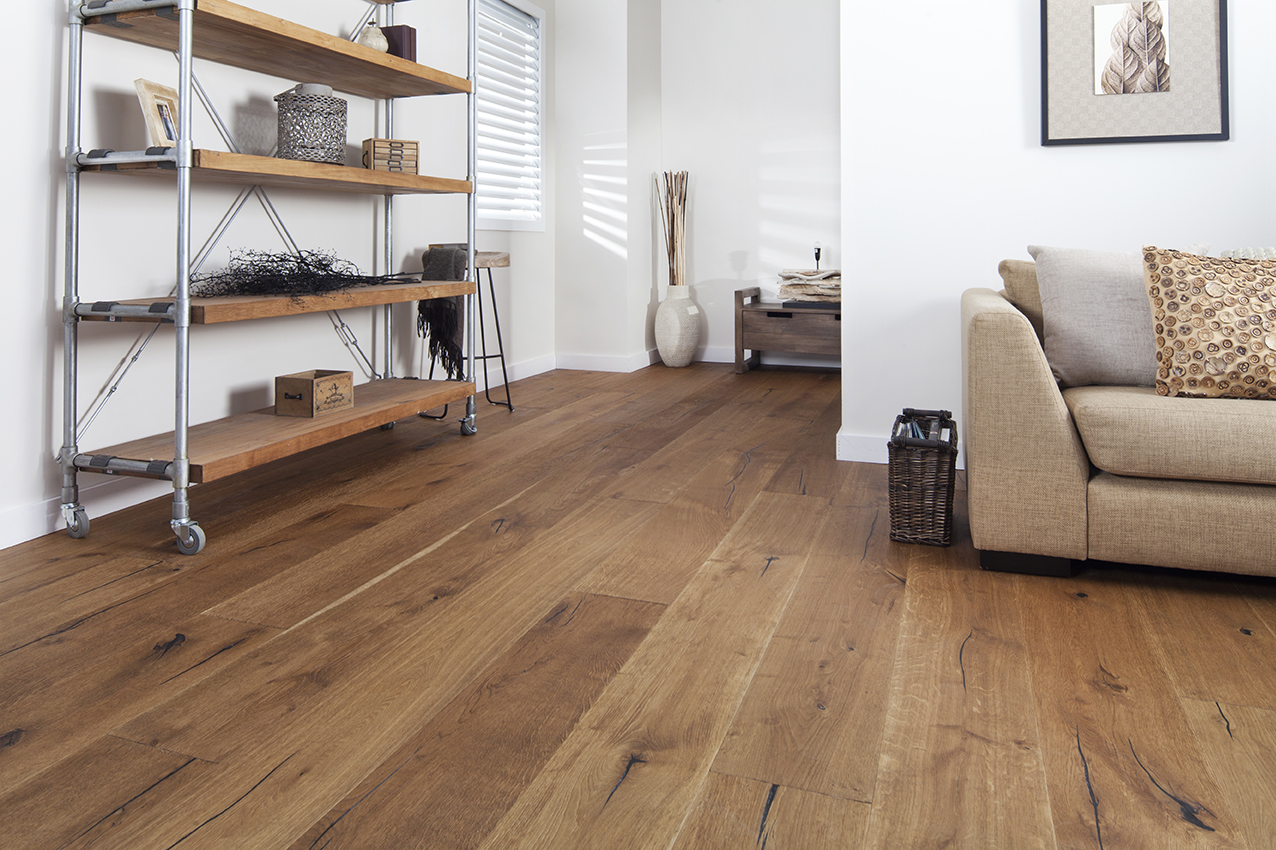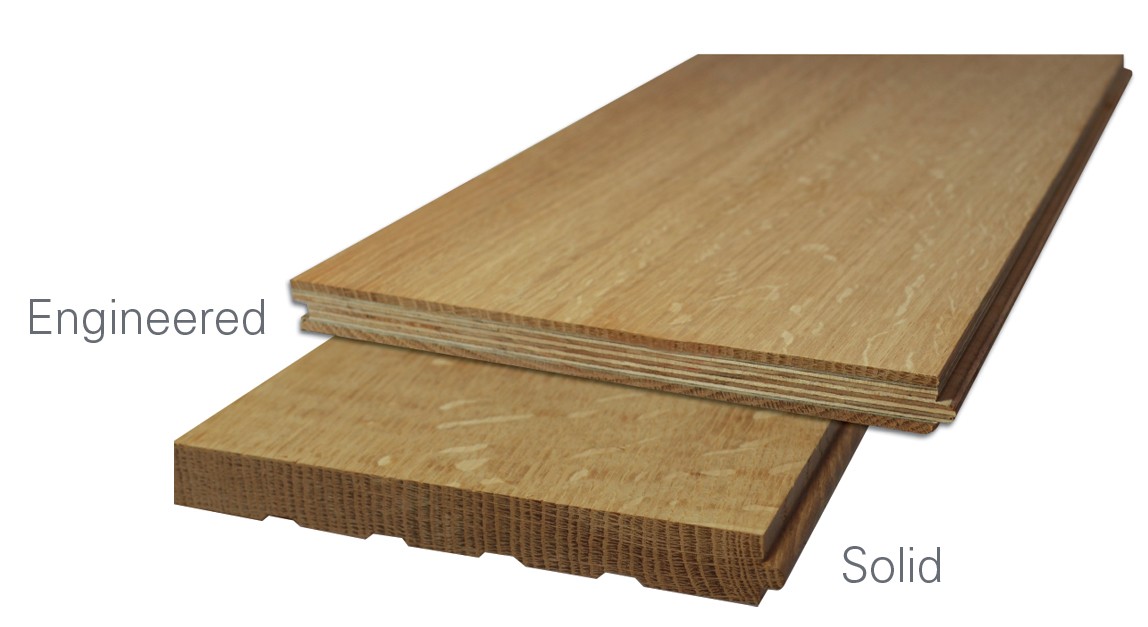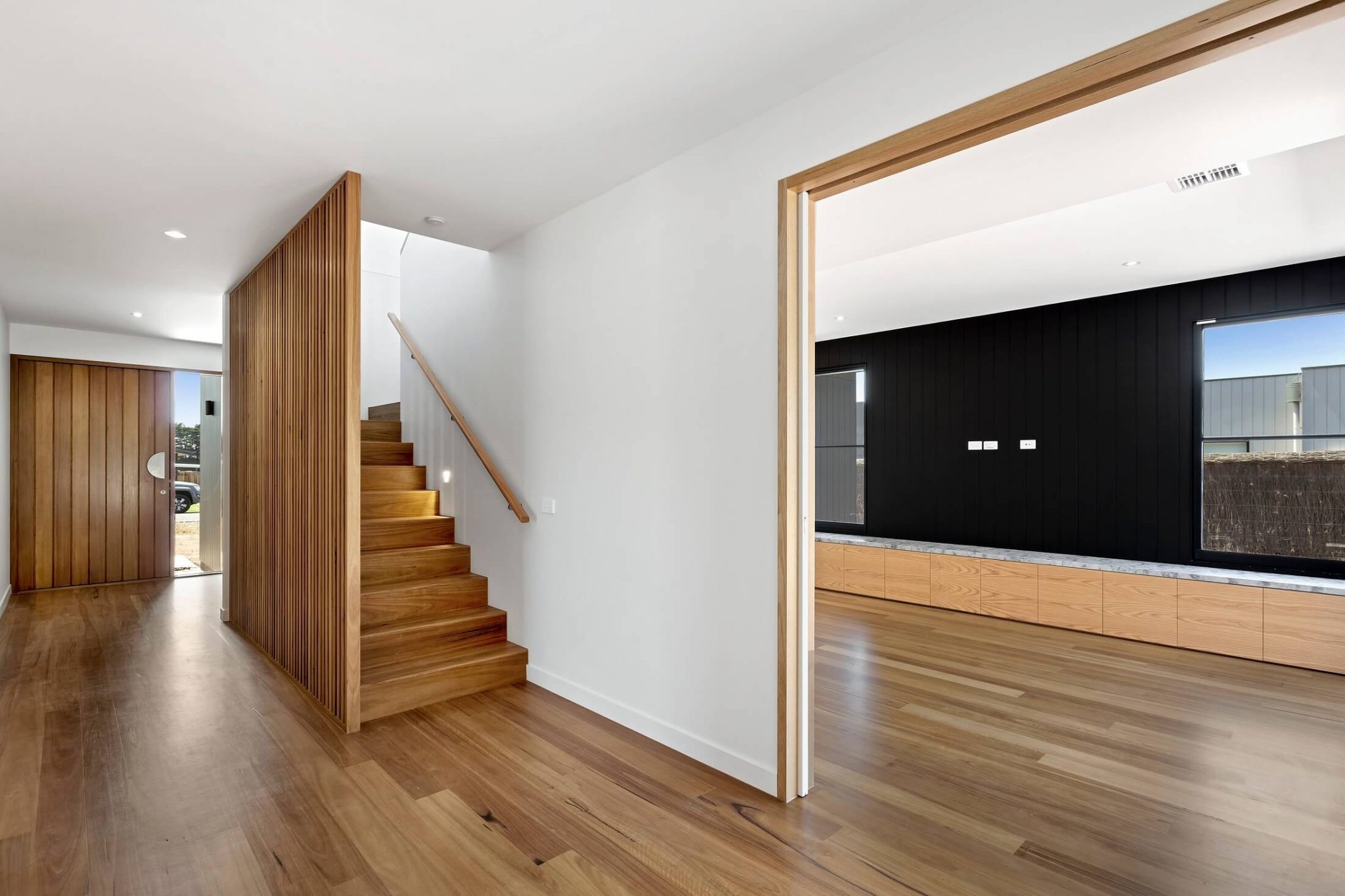Timber Flooring – A Useful Guide
Timber flooring is one of the most popular and practical flooring options when building or renovating your home, and for good reason – timber flooring can create a feeling of warmth, depth and natural beauty. Timber flooring also feels great underfoot and is practical and easy to clean.
There are a huge range of timber flooring options available, so choosing the right floor for your lifestyle and personal taste can be a tricky decision to make, as each type of timber has its own unique characteristics, advantages and disadvantages.
In this useful guide, we explain the different timber flooring options available when building or renovating your home and what you should consider when making your selection.
1. Know Your Timber
There are many types of timber flooring options to choose from, all with different qualities, characteristics and price points. Some of the more popular varieties are summarised below:
Blackbutt: This popular, hard wearing timber is quite pale in colour and has a straight-running grain making it suitable for people who like a consistent and uniform look.
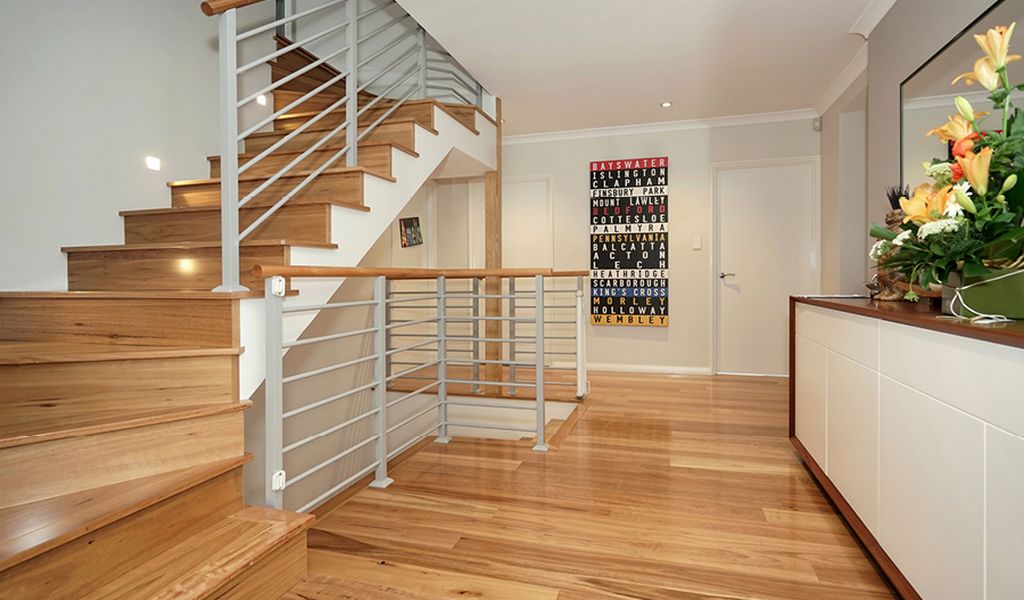
Blackbutt. Credit: Lifewood FloorsWormy Chestnut: This timber has a lot of character and is very popular. It displays its South Australian history in its looks with squiggly worm marks, evidence of bush fires, pin holes and beetle marks, making each piece very unique and beautiful.
Oak: Oak provides a modern look and is available in several species and grades, depending on how many features you wish to see in the timber. Tasmanian Oak creates a pleasant warmth to your home and American and French Oaks are very sophisticated and luxe.
Ironbark: A richly coloured and textured timber with a moderately coarse texture and interlocked grain. Ironbark offers a high quality, classic and luxurious feel and is one of the hardest timbers around, so it’s great for high use zones or for those who like to wear high heels in the house.
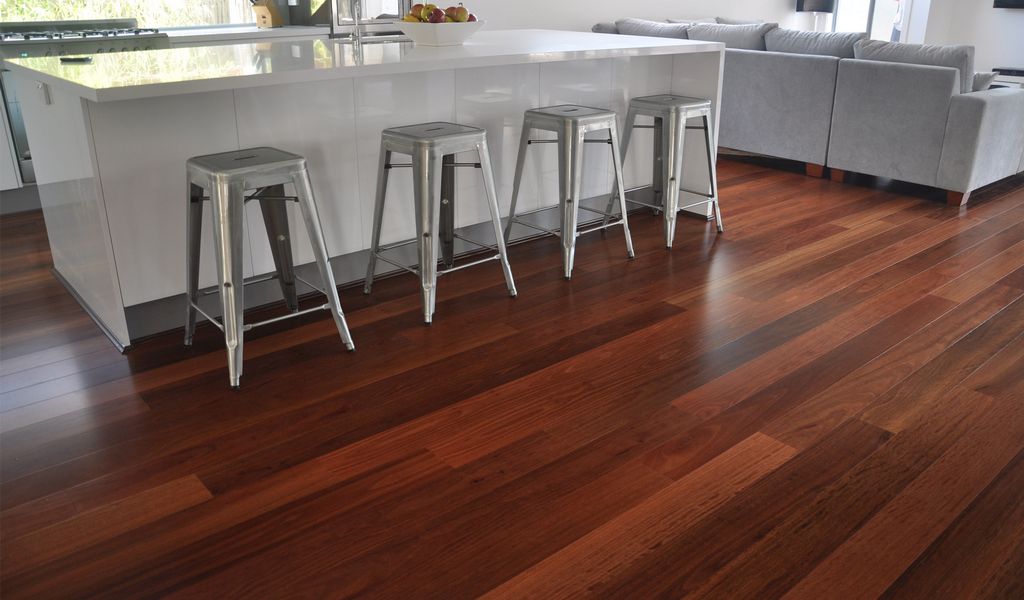
Iron Bark. Credit: Victoria Designer FloorsJarrah: Originating from Western Australia, Jarrah is a popular hardwood choice for heritage homes and is ideal for residential applications due to its high density. Jarrah is easily recognisable for its rich red hue and will deepen over time into a soft burgundy.
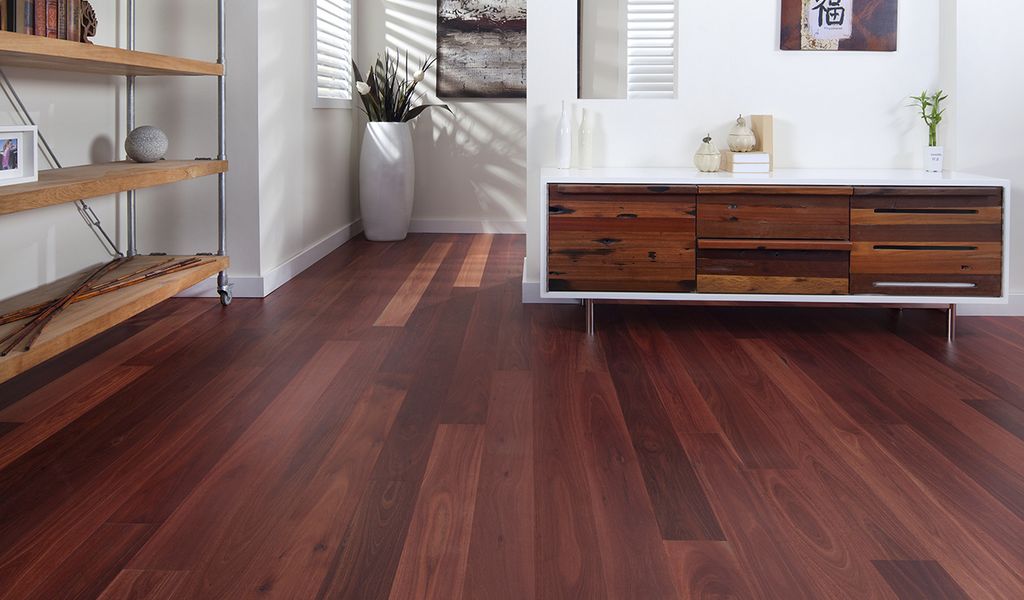
Jarrah. Credit: Arrow Sun Specialty FlooringSpotted Gum: A very tough timber grown on Australia’s east coast, from the foothills of the Snowy Mountains in New South Wales to the fertile coastal regions of southern Queensland. Spotted Gum exhibits a wavy grain produced by the weathering of the tree as it strips its bark, which can produce a highly valued and attractive fiddle-back effect. A very hard timber with rich and varied colours provide Spotted Gum a unique and natural look.
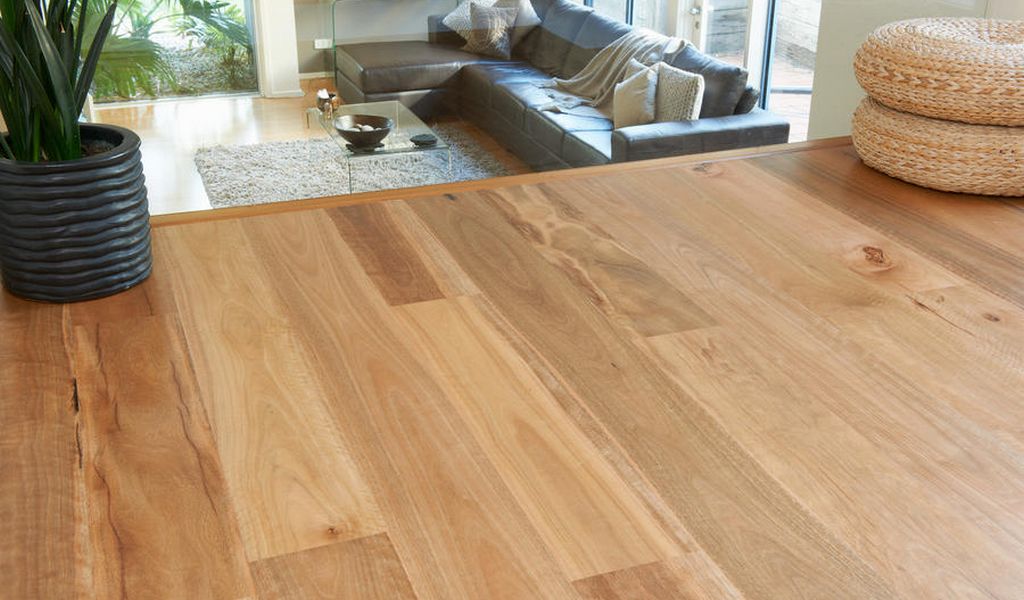
Spotted Gum. Credit: Floating Floors2. Solid vs. Engineered Timber Flooring
When selecting timber flooring, there are two approaches you can take – solid or engineered. The difference between the two is that engineered timber flooring has a top layer (the lamella), which is pre-finished and bonded on top of an engineered base (the core – usually made of plywood), whereas solid timber flooring is made from a solid piece of timber and is not bonded to an engineered base. In terms of installed cost, there isn’t usually a great deal of difference between the two, however engineered floors are generally slightly less expensive due to their ease and speed of installation. Engineered timber flooring does not require sanding, staining or sealing, which saves on labour costs.
Solid timber flooring is solid all the way through and requires more work to install due to acclimatisation, installation, sanding, staining and polishing/sealing. Hardwood timber flooring must be either nailed or glued to a sub-floor and cannot be fixed directly over an existing floor or concrete. With the right care and maintenance, hardwood timber flooring can last for generations and can be re-sanded and treated if it looks look worn. Solid timber flooring can be finished with high gloss, matte or satin, depending on your taste.
Engineered timber flooring boards are designed to minimise the inherent challenges associated with solid timber, such as expansion and contraction that can cause cupping and bowing. Due to their thin top layer, most suppliers do not generally recommended re-sanding and treating engineered timber flooring. One of the benefits of engineered timber flooring is that they ‘float’ and can be installed on any flat surface and do not need to be nailed or glued to a sub-floor, however it is generally recommended to invest in a quality underlay to minimise noise and moisture ingress from the surface below. Engineered timber flooring is also a good option if you want to install underfloor heating, but don’t want to be limited to tiling the area.
3. Not All Timber Flooring is Created Equal
The cost of timber flooring is dependent on the species, grade, characteristics and quality of the timber selected. At the time of writing this article, the most expensive grade is ‘select’ grade, which provides a limited variation in natural characteristics. The features that are present in select grade timber are relatively small and few in number. Conversely, ‘character’ grade timbers (otherwise known as ‘rustic’ or ‘feature’ grade) are generally less expensive. Character grade timbers exhibit a high level of natural features including knots, gum veins, face checking and insect trails and usually have a larger range of colour variation. The grade of timber you select largely depends on your budget and style preferences. Whilst character grade timber flooring may be less expensive than select grade, they are very popular due to their unique character and charm.
Are you planning to build a new home or renovate your existing home?
The team at ARCA are passionate about building beautiful, practical and energy efficient homes and we have a wealth of knowledge and experience.
Call us now on 1800 GENTRIFY or email us at enquiries@gentrify.com.au to book your free consultation.
Disclaimer: The contents and information contained in this article are intended for general purposes only and should not be relied upon by any person as being complete or accurate. ARCA Pty Ltd, its employees, agents and other representatives will not accept any liability suffered or incurred by any person arising out of or in connection with any reliance on the content or of information contained in this article. This limitation applies to loss or damage of any kind, including but not limited to, compensatory, direct, indirect or consequential damage, loss of income or profit, loss of or damage to property and claims by any third party.


